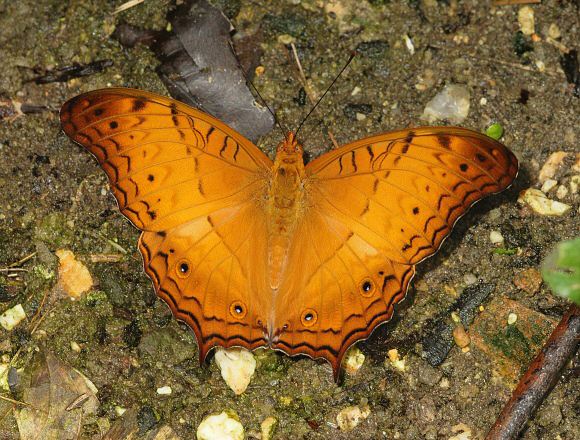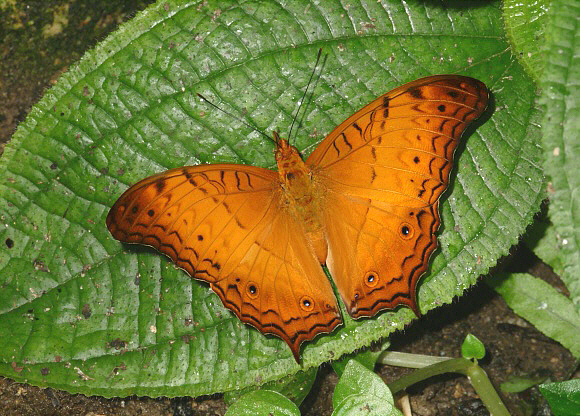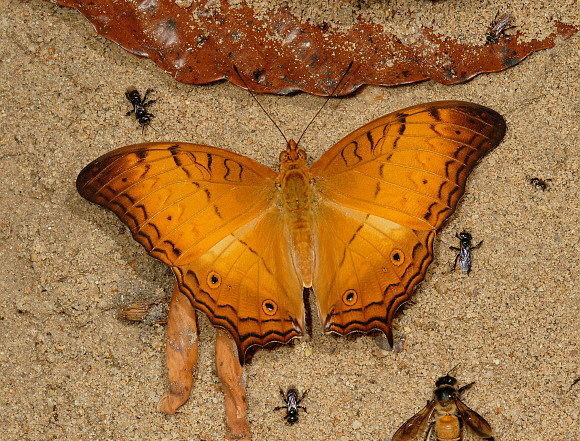
Introduction
The gorgeously coloured Cruiser is one of the most familiar species in the Oriental region, but it is only the male which has the dazzling orange wings – like all members of the genus Vindula this species is sexually dimorphic. The females are similar to the bright orange males in pattern, but have a grey ground colour, and a broad white post-median band extending across both wings.
The genus comprises of 4 species, erota, arsinoe, dejone and sapor. The latter is endemic to the Solomon Islands and Bougainville. The others have a much wider distribution – erota and dejone being found across much of the Oriental region, and arsinoe on Papua New Guinea and in north-eastern Australia.

Habitats
This butterfly is found in primary rainforest at elevations between sea level and about 500m. It can sometimes be found in light gaps deep within the forest, but is very much a sun-loving species and generally keeps to forest edge habitats e.g. riverbanks, roads and village gardens.
Lifecycle
The eggs are barrel-shaped and ribbed, and vary in colour from straw-coloured to a dirty mottled brown. They are laid at various angles in a row, along a thin tendril of a Passiflora or Adenia vine.
The caterpillar when fully grown is blackish, with grey patches along the sides, and a pale greenish broken line along the back. The head has a pair of long tentacle-like horns, and each segment is armed with dorsal and lateral spines.
The chrysalis is one of the most amazing examples of camouflage in the butterfly world, looking exactly like a piece of dead, dry, twisted, half-decomposed leaf, and according to one’s beliefs, is either one of evolution’s finest adaptations or one of God’s most amazing creations. It is a dirty pale brown colour, marked on the dorsal surface with numerous fine dark lines patterned like the minor veins and capillaries on a dead leaf. A dark lateral line extends from the tail, looping around the wing cases, which are dark greyish brown, with the veins picked out in blackish. The dorsal surface carries a pair of large flat protuberances shaped like bits of broken twisted leaf. A remarkable object to say the very least.
Adult behaviour
Males are usually seen in one’s and two’s imbibing moisture on sandbanks in full sunshine. They also feed at carrion and rotting fruit. At these times they usually keep their wings outspread, but in particularly hot conditions they will hold them erect. They are not usually nervous, and can be approached quite closely, but if deliberately disturbed they fly off rapidly and do not generally return to resume feeding.
Females are seen much less commonly, but can sometimes be found nectaring on flowering bushes including Lantana, Ixora and Rhododendron.

